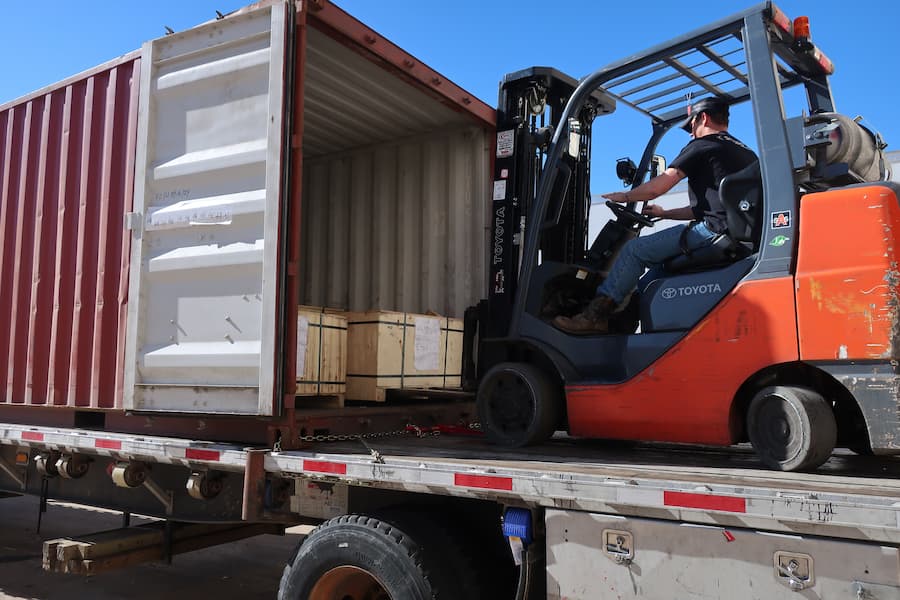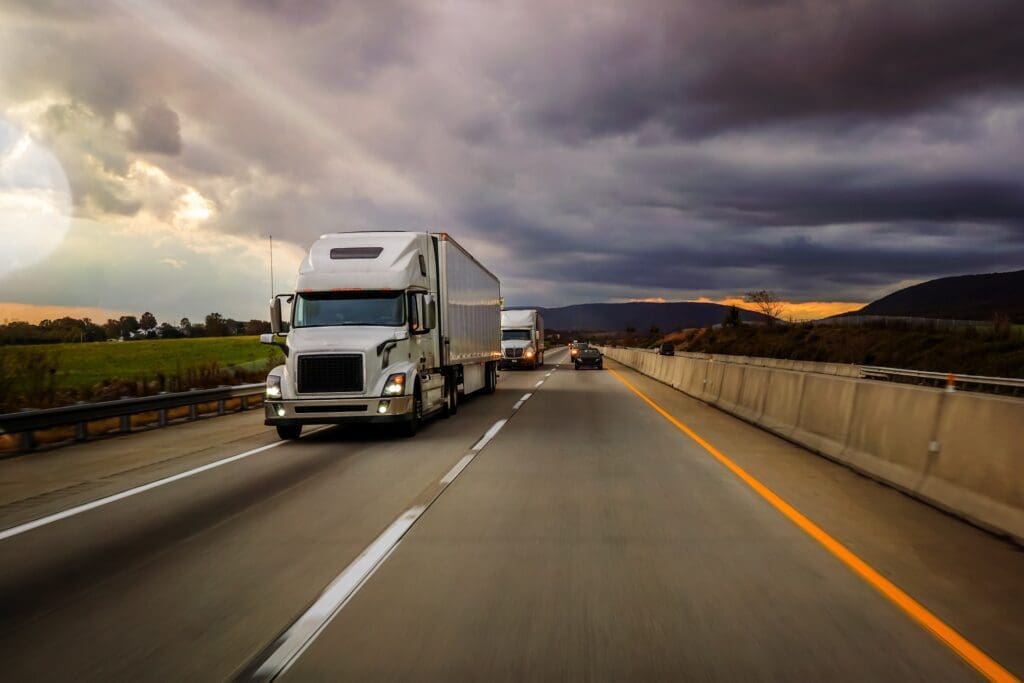It’s an old idea made better with new technology. It can cut fuel costs, improve highway safety, and reduce CO2 emissions. It’s platooning, and it may be the wave of the future.
Platooning works on the aerodynamic principle that cyclists, NASCAR drivers, and geese employ: namely, that vehicles (or birds) save energy by following a leader. That leader profits as well, since its followers create a wave of air pressure that helps him cut through resistance. Big rigs used the idea during the 1970s convoy craze until it became evident that tight groups of 80,000 lb. trucks hurtling down the highway constituted a safety hazard.
But technology has recently made platooning safe, thanks to automated driving support systems like cameras, advanced cruise control, and radar-based collision avoidance technology. Trucks involved in platooning use these systems along with cellular connectivity technology. “We’re sending information directly from the front truck to the rear truck, information like engine torque, vehicle speed, brake application,” says Josh Switkes, one of the founders of Peloton, one of the leaders in platooning tech. “Whatever the front truck is doing, the rear truck is doing it instantly, automatically, very reliably.”
The Federal Highway Administration (FHWA) refers to platooning as “partially automated truck platooning (PATP) because the driver is assisted by the technology. More specifically, PATP is Level 1 automation, which is defined by the Society of Automotive Engineers as “the driving mode‐specific execution by a driver assistance system of either steering or acceleration/deceleration using information about the driving environment and with the expectation that the human driver perform all remaining aspects of the dynamic driving task.”
Pros
That automation is what makes platooning safer than the old-style convoys. “We can send data very rapidly between the two trucks,” Switkes says. “It’s all electronically integrated. The reaction is about 30 milliseconds, compared to a human taking 1 to 1.5 seconds to react, at a minimum.”
The real lure of platooning, though, is fuel savings. The FHWA—who has several web pages dedicated to PATP research—notes that “early results indicate up to 15% fuel savings for following trucks.” In addition, it’s estimated that the lead truck will save about 5% in fuel costs. In an industry that spent close to $90 billion on diesel fuel last year, that’s a substantial savings—one that the FHWA says “will have significant national economic benefits” and “improve global competitiveness.” It’s the one bright spot in the midst of rising shipping costs. According to Mike Roeth, executive director of the North American Council for Freight Efficiency, it would be “impossible to obtain using any other type of technology available to the trucking industry today.” And of course, platooning also offers another type of savings: less fuel used means a reduction in the number of greenhouse gasses emitted.
Proponents of platooning also believe it could reduce travel time and traffic congestion on freight corridors. If it were implemented across the country, it could optimize the highway transportation network and improve national freight movement.
Platooning could also benefit drivers by reducing their workloads and lessening fatigue.
Cons
Or maybe not. “The biggest downside, to my mind, is the fate of the poor driver in the second truck,” says Rolf Lockwood, Executive Contributing Editor to Truckinginfo.com. “These are not autonomous trucks, remember, so all following trucks will need a driver. How on earth do you keep that poor bugger awake?”
Others are concerned about the feasibly of platooning, since (right now) it isn’t really suited for congested streets or bad weather.
And safety is still an issue. A few recent fatal crashes involving automated passenger vehicles have made people question whether it’s too easy for drivers to misuse the technology. Plus there are all the other vehicles on the road to contend with. “The chief safety concern for passenger vehicles is how other drivers will react to platoons,” said Jonathan Adkins, executive director of the Governors Highway Safety Association. “How fast should platoons be permitted to travel? Will long platoons block exit lanes that were not designed for such circumstances? Can we limit platoons to only the right lane, rather than blocking multiple lanes of traffic? How can we prevent cars from trying to dangerously cut in between platooning trucks? The good news is that the necessary research is being conducted.”
The (Near) Future
Truck makers are conducting platooning tests on highways across the world.
- Peloton trucks recently completed a test in Florida where two Peloton-equipped Volvo VNL670 Class 8 trucks traveled over 1,000 miles separated by just 65 feet. Drivers were in control the entire time but used Peloton’s linked, collision-avoidance platooning technology in order for one to follow the lead at a range that would aerodynamically benefit each truck.
- Daimler has been testing trucks in Europe and Asia, and in 2016 ran a three-truck platoon on German highways under complete autonomous control. They recently held a demonstration of their platooning technology at their North American headquarters in Portland, OR.
- Peterbilt recently participate in military vehicle convoys on Michigan’s Interstate 69. Two Peterbilt Model 579 tractor-trailers led the platooning test, which was run in partnership with Alabama’s Auburn University in Alabama and the U.S. Army Tank Automotive Research, Development and Engineering Center.
- Scania secured a deal with a Finnish fleet to test platooning technology on Scandinavian highways and will conduct tests in bad weather and typical traffic.
- MAN Truck & Bus will use professional drivers rather than test drivers in platooning tests in Germany this year, hoping to learn how drivers react to the technology.
- Volvo has tested platooning in Europe for several years, and in 2017 tested a three-truck platoon on Interstate 110 in California. Working with Peloton, Voloc ran the three trucks at 55 mph with 50-foot intervals between them.
- Tesla is also planning to include platooning technology as a Standard feature on its Semi-electric truck.
Of course, in order for trucks to platoon, states must permit it. As of now, 16 states support truck platoon demonstrations and testing, and 11 states now have laws regarding truck platooning, according to the Federal Highway Administration. National legislation has also been proposed, in the form of the “Vehicle Platooning For Safety And Efficiency Act.” All in all, the outlook for platooning is bright, so much so that Peloton plans to use its two-truck platooning technology in real-world commercial fleets before the end of the year.
The Pros Of Working With Us
At Next Exit Logistics, we earn the trust of our clients with efficiency, transparency, and security. In addition, we understand how to handle freight services for unusual, oversize, or overweight shipments and are certified to arrange the shipment of hazardous materials. To learn more about our services, call Next Exit Logistics at 866-624-2661 or contact us via email.




